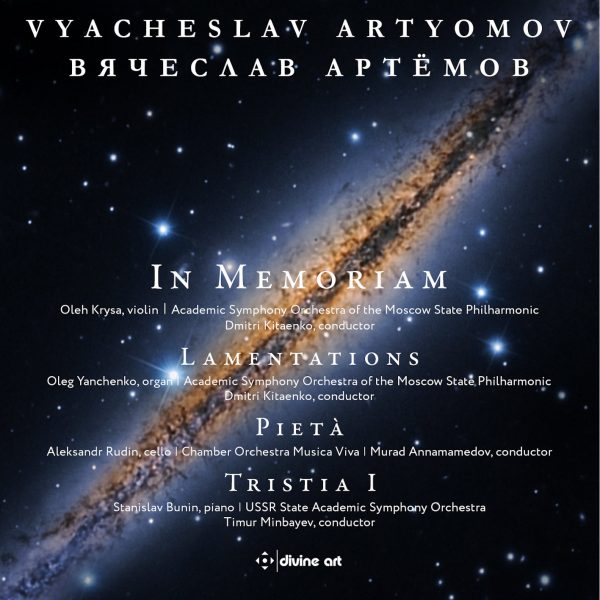Fanfare
Based on their titles alone, you might guess that the works on this CD are a real downer. You would not be wrong. I don’t recommend playing this CD, particularly in one sitting, if you’ve had a bad day at work or are feeling depressed. When I wrote about the Requiem, back in 2006, I compared parts of it to Penderecki’s Magnificat and St. Luke Passion. The works on this CD also suggest Penderecki, but during his neo-Romantic period. While the music sounds modem, it is predominantly tonal, and there is nothing experimental about it. In its unrelieved glumness, it hardly lives up to Soviet ideals.
In Memoriam is derived from a youthful violin concerto, and even now, it is a violin concerto in everything but name. It opens slowly, with an extended solo, but the tension and density steadily ramp up as the work progresses. One might say that it starts with Shostakovich and that it ends with Schnittke. Lamentations, in three sections, each about four minutes in length, features orchestral strings (with percussion) and an organ. Its material is derived from choral sections of the aforementioned Requiem. It is hard not to hear the first section of this work and think of Penderecki’s Violin Concerto No. 1 or The Awakening of Jacob. The second section opens with a melody so sad but comforting it might have come from a film score, but the keening strings soon return and shatter hope. A brief, dissonant climax in the middle of this section suggests the Adagio from Mahler’s 10th. The third section follows a similar pattern, and the melting string glissandos at the end once again suggest Penderecki.
The Pietà is a common subject in the visual arts, but less common in music, unless you consider the Stabat Mater to be its equivalent. Again, this is a concerto, for cello, in all but name. To have this work follow Lamentations seems like a miscalculation, as keening orchestral strings are prominent here as well. As with In Memoriam, the music picks up energy and density as it progresses. The ending is something new, however: After a quiet cello cadenza, the orchestral strings re-enter, and with the help of bells, send themselves and the soloist into an outer space tremolando.
Parts of Tristia I sound like very much like Charles Ives’s The Unanswered Question. That’s not a bad thing; if you’re going to pay homage to other composers, it’s good to remember Ives, because he was one of the original bad boys of Modernism. Against divided strings and a piano, who seem to be doing their own respective things, harmonically and rhythmically, a lonely trumpet calls out and receives no response. The composer writes, “Nevertheless, this piece is a sad poem about life which slowly descends into eternal sleep.” Last one out, don’t forget to turn off the light!
The soloists on the CD are somewhat familiar in the West, or became more familiar later on, and they do not disappoint. The orchestral playing is very good too, but the engineering is a little glassy. I don’t think anyone will complain about the performances, as long as they can accept the fact that these works take an emotional toll. Artyomov has written, “Despair begets faith,” and you will need faith to get through this CD intact. Artyomov is a gifted composer and I am glad that Divine Art has decided to reissue (now) eight CDs of his music, but there are not a lot of smiles to be had here.
@divineartrecordingsgroup
A First Inversion Company
Registered Office:
176-178 Pontefract Road, Cudworth, Barnsley S72 8BE
+44 1226 596703
Fort Worth, TX 76110
+1.682.233.4978












